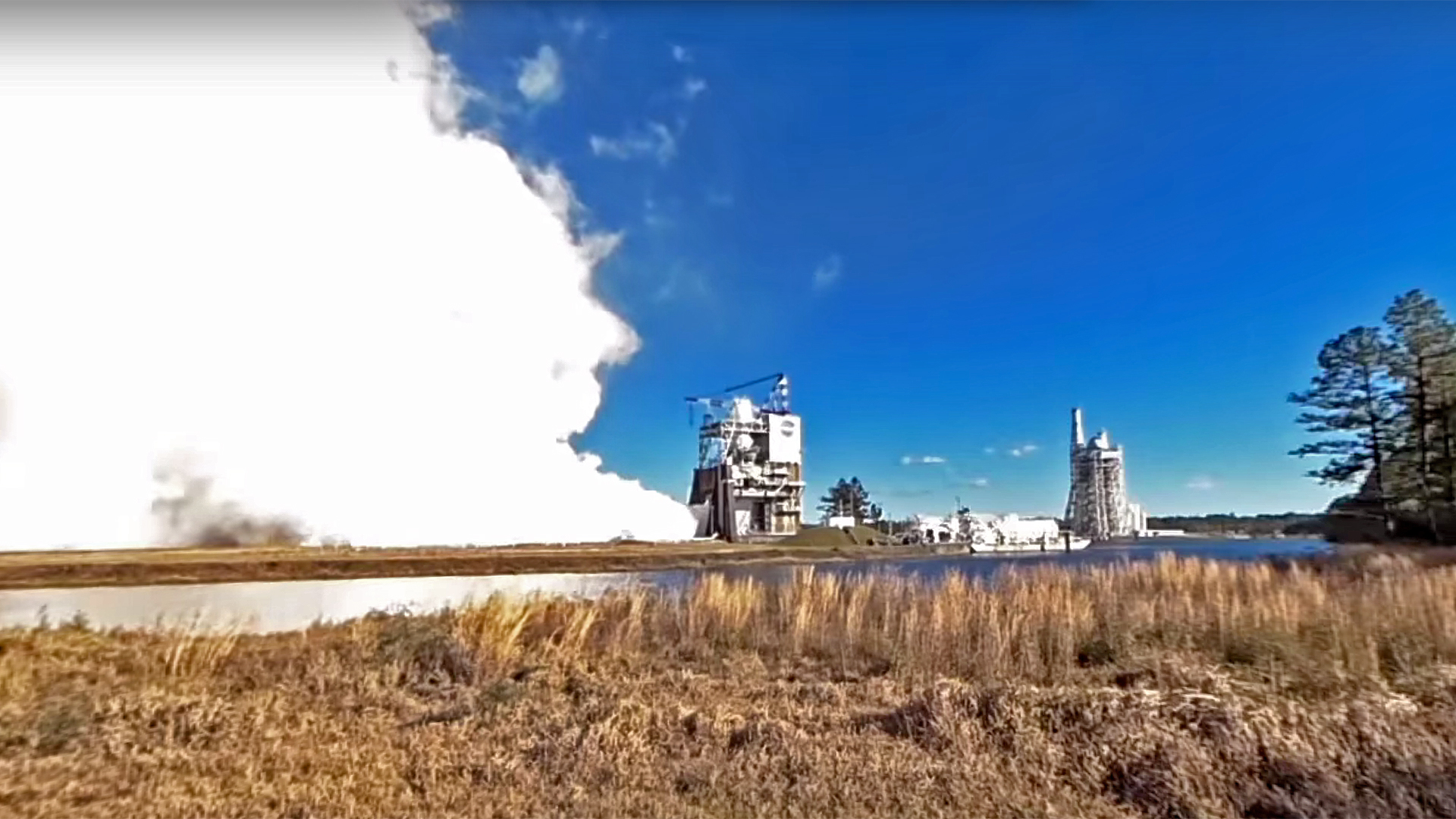

By the early years of next decade—or perhaps sooner, if Donald Trump has his way—American astronauts will be catapulted from the Earth’s surface to planetary orbit and points beyond atop a U.S. government-made pillar of bottled fire known as the Space Launch System, or SLS. But that giant rocket—which will serve as the keystone for potential NASA missions to the moon, an asteroid, or Mars—would just be an expensive skyscraper, were it not for the quad pack of RS-25 rocket motors mounted at its base.
Don’t confuse the RS-25 with the SLS booster rockets we’ve seen running hot on the test pad before. Those are solid-fueled, which means, in effect, they’re just giant versions of the Estes rockets you played with as a kid: once you light ’em, they burn just as fast as they can until the fuel runs out. On the other hand, the RS-25—the same engine used on the Space Shuttle—is liquid-fueled, giving astronauts the ability to throttle up and down as needed. Which, considering each RS-25 pumps out more than half a million pounds of thrust, is rather handy.
But while it may be a proven rocket, NASA is nothing if not diligent when it comes to testing. So before firing the first SLS into the heavens, the space agency brought the RS-25 to its outdoor hot-fire engine test facility at Stennis Space Center in Mississippi to see how it burns. And since even the luckiest amongst us will never come within 10 miles of an SLS at launch, NASA set up a bunch of 360º cameras near the test site so we could better appreciate what happens when America’s brightest minds ignite liquid hydrogen and oxygen in a bell.
(Just a heads-up: For the full experience, you’ll need to watch NASA’s video on an Internet browser that supports 360º viewing, such as Google Chrome.)

And if you want to know more about the RS-25, check out NASA’s infographic below.
